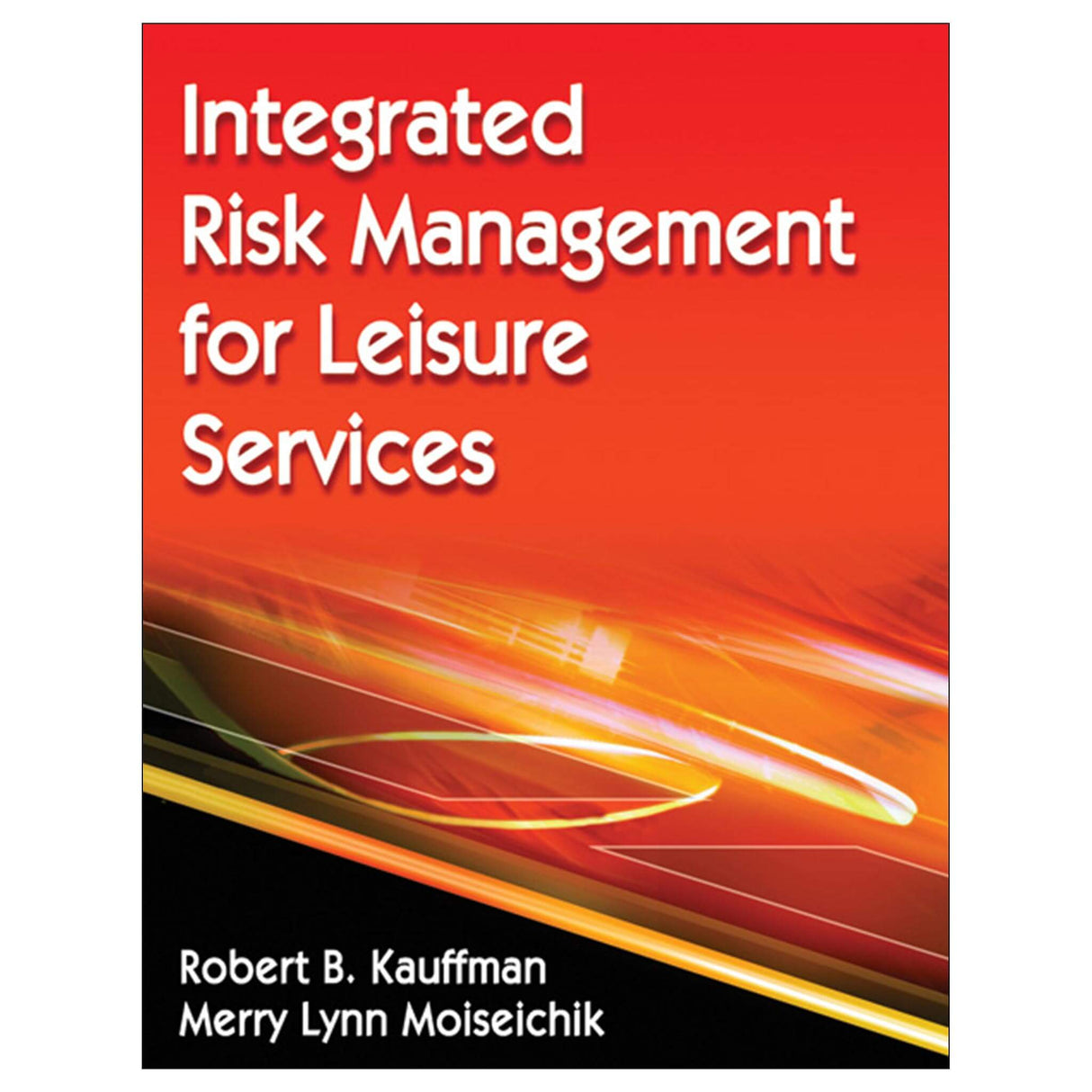Integrated Risk Management for Leisure Services PDF
$75.95 CAD
Access Duration: 10 Years
Integrated Risk Management for Leisure Services provides both students and professionals with a systematic approach to safety. By integrating risk management, accident prevention, and emergency response with information on legal liability, Integrated Risk Management for Leisure Services enables leisure service providers to implement strategies to reduce or eliminate bodily injury, property damage, and financial loss.
Integrated Risk Management for Leisure Services uses a four-phase integrated risk management model. The first three phases focus on negligence, the accident process, and risk management plans to reduce or eliminate injury, damage, or loss. The fourth phase focuses on what to do after an incident occurs to reduce the impact of injury, damage, or loss.
Integrated Risk Management for Leisure features several unique aspects for students and professionals in the recreation and park field. It covers safety prevention and accident processes in the recreation and parks field. Then it addresses how to manage the post-incident situation to reduce impacts. Last, the text integrates these two new areas with the traditional areas of legal liability and risk management planning in an effort to provide safer recreation and park programs.
Part I: Principles of Negligence
Chapter 1. Negligence
General Legal Principles
Four Windows of Negligence
Professional Conduct
Summary
Exercises
Chapter 2. Standard of Care
Visitor Categories
Recreation Land Use Statutes
Attractive Nuisance
Summary
Exercises
Chapter 3. Defenses Against Negligence
Legal Doctrines That Limit Liability
Transfer StrategiesInsurance
Contracting Services
Reducing Risks Through Programmatic Strategies
Summary
Exercises
Part II: The Accident Process and Safety Management
Chapter 4. Accident Causation and Safety Management
Historical Overview of Safety Management
Behavioral Models
Epidemiological Models
Human Error Management
Human Error Model
Highly Reliable Organizations (HROs)
A Cautionary Note
Summary
Exercises
Chapter 5. Analytical Tree Analysis
Event and Causal Factor Analysis
Barrier Analysis
Tree Analysis
The Four Ts: Terminate, Treat, Transfer, and Tolerate
Summary
Exercises
Chapter 6. Metaphorical and Outdoor Adventure Models
What Are Metaphorical Models?
Early Metaphorical Models
Examining the Underlying Factors in Accidents and Accident Models
Metaphorical Accident Models
Negligence and Program Planning Implications
Summary
Exercises
Chapter 7. Programming for Risks
2x2 Risk Paradigm: Perceived Versus Actual Risks
Adventure Experience Paradigm
Programming Implications
Integrating Underlying Factors and Accident Process
Legal Implications
Summary
Exercises
Part III: Risk Management
Chapter 8. Risk Management Plans
Winding River Canoe Rentals Case Study
Risk Management Process
Structure of the Risk Management Plan
Evaluation and Continued Assessment
Risk Management Process Applied to Winding River Canoe Rentals
Summary
Exercises
Part IV: The Postincident Response
Chapter 9. Emergency Action Plans
Components of an EAP
Writing EAP Statements
Legal Review
Alternative EAP Format
Summary
Exercises
Chapter 10. Managing the Incident
Search Phase
Rescue Phase
Medical Phase
Evacuation Phase
Incident Command Structure
Summary
Exercises
Chapter 11. Crisis Management
The Need for Good Crisis Management
General Rules and Principles for the PIO
Managing the Crisis
Media
Summary
Exercises
Chapter 12. Supporting the Victim and the Family
Importance of Providing Support to Victims and Their Families
Dealing With the Anger of the Victim and the Victim’s Family
Emergency Action Plan Summary
Exercises
Chapter 13. The Ripple Effect
Impact of the Ripple Effect
Symptoms of Stress and the Ripple Effect
Critical Incident Stress Management
Summary
Exercises
Chapter 14. Conducting an Investigation
Need for Investigation
Internal or External Study
Selectng an Investigator
Collect and Review Data
Report
Implementation
Legal Implications
Summary
Exercises
Consider safety and rescue over a natural experience
Steps to setting up a preplan
Stick to the facts when dealing with the media
Tips to conducting an investigation after an incident
Instructor guide. Includes chapter overviews, learning objectives, chapter exercises with answers, critical thinking questions, and a glossary.
Test package. Features multiple-choice, true-and-false, and short-answer and essay questions.
Presentation package. Includes a comprehensive series of PowerPoint slides for each chapter of the book.
Image bank. Includes most of the figures, content photos, and tables from the text, sorted by chapter. Images can be used to develop a customized presentation based on specific course requirements.





